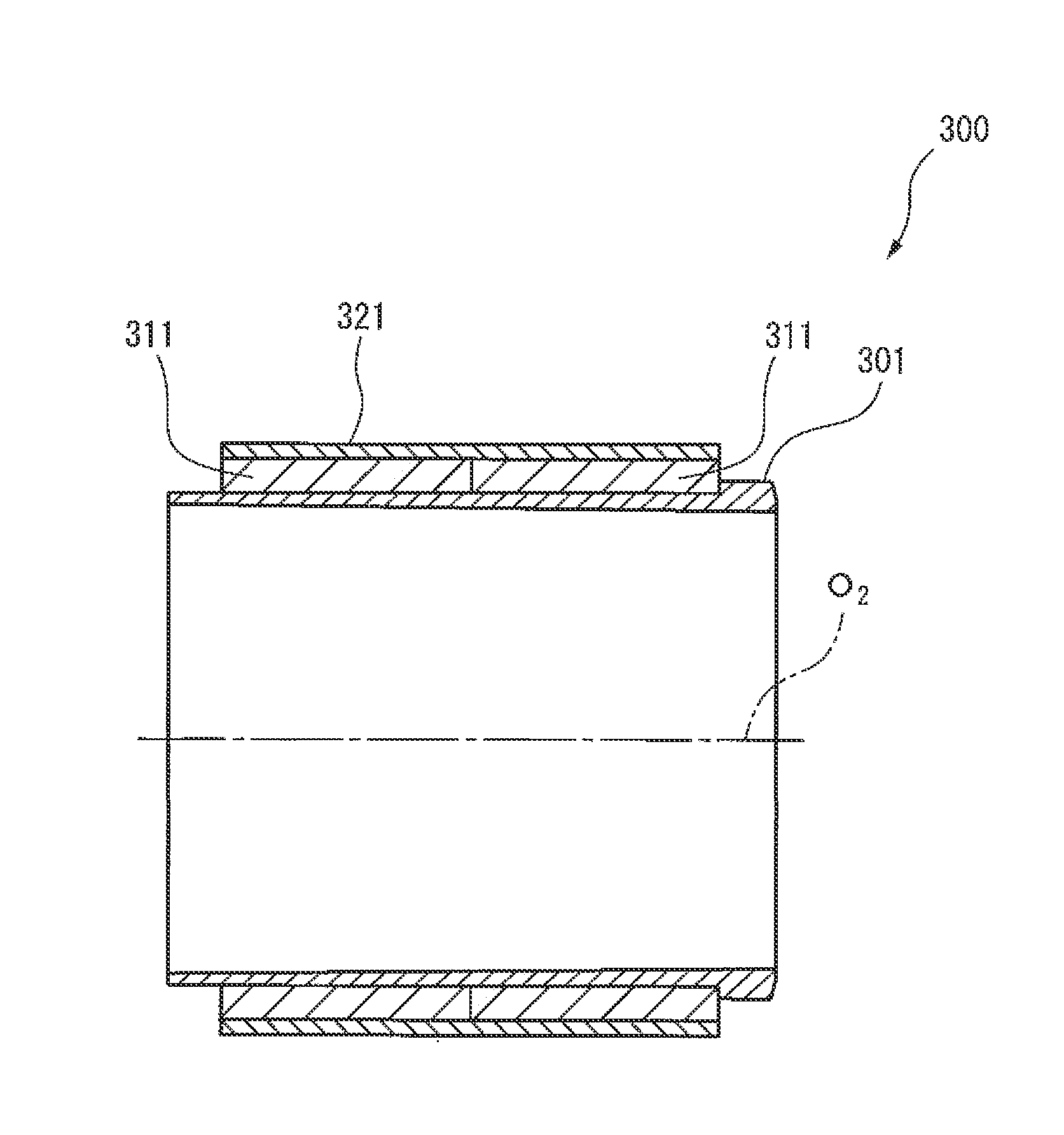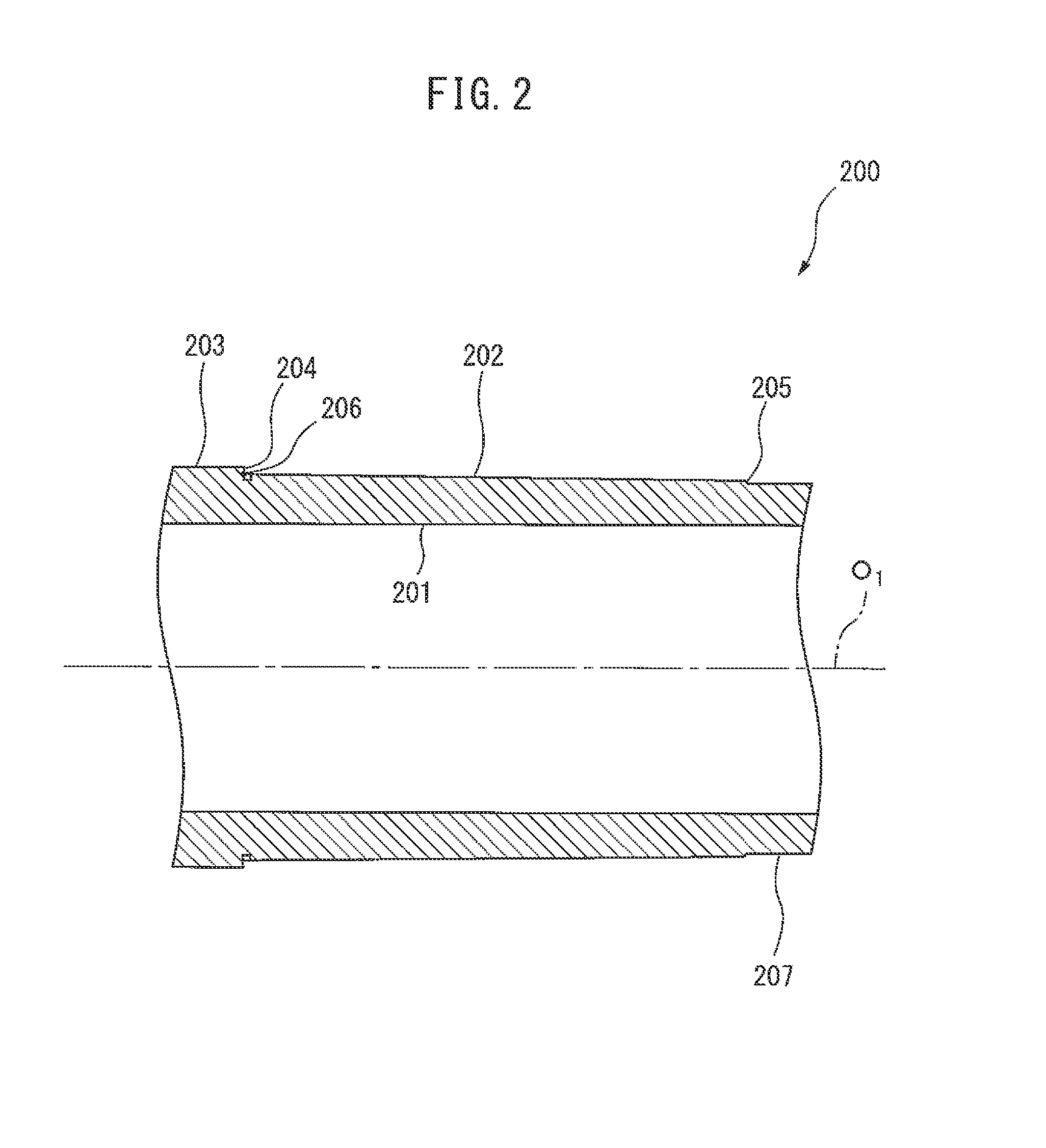Rotator member to be fixed to rotary shaft of rotary electric machine, rotator including rotator member, and method for manufacturing rotary electric machine and rotator
a technology of rotator and rotor shaft, which is applied in the direction of manufacturing stator/rotor body, magnetic circuit rotating parts, and shape/form/construction of magnetic circuits, etc., can solve the problems of ring-shaped magnets cracking, failure of high speed rotation, and difficulty in providing a larger electric motor by providing a larger torqu
- Summary
- Abstract
- Description
- Claims
- Application Information
AI Technical Summary
Benefits of technology
Problems solved by technology
Method used
Image
Examples
Embodiment Construction
[0051]An embodiment of the present invention will be described below in detail with reference to the drawing. Firstly, a structure of an electric motor 100 according to an embodiment of the present invention will be described referring to FIG. 1. It should be noted that, in the following description, a direction extending along the central axis of a rotary shaft of the electric motor 100 is designated as an axial direction, and the left side on the paper of FIG. 1 is designated as an axially front side while the right side thereon is designated as an axially rear side. It should also be noted, however, that the axially front side and the axially rear side in the following description are defined for a point of view of an easy and convenient understanding of the invention, and are not intended to limit the directions, e.g., front side and rear side, of the electric motor.
[0052]The electric motor 100 includes a housing 102 that defines an inner space 101, a stator 110 statically dispo...
PUM
| Property | Measurement | Unit |
|---|---|---|
| rotation speed | aaaaa | aaaaa |
| taper angle | aaaaa | aaaaa |
| thickness | aaaaa | aaaaa |
Abstract
Description
Claims
Application Information
 Login to View More
Login to View More - R&D
- Intellectual Property
- Life Sciences
- Materials
- Tech Scout
- Unparalleled Data Quality
- Higher Quality Content
- 60% Fewer Hallucinations
Browse by: Latest US Patents, China's latest patents, Technical Efficacy Thesaurus, Application Domain, Technology Topic, Popular Technical Reports.
© 2025 PatSnap. All rights reserved.Legal|Privacy policy|Modern Slavery Act Transparency Statement|Sitemap|About US| Contact US: help@patsnap.com



